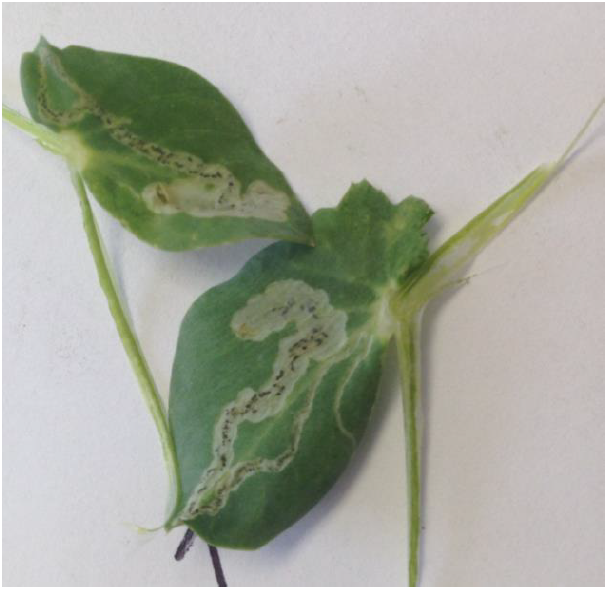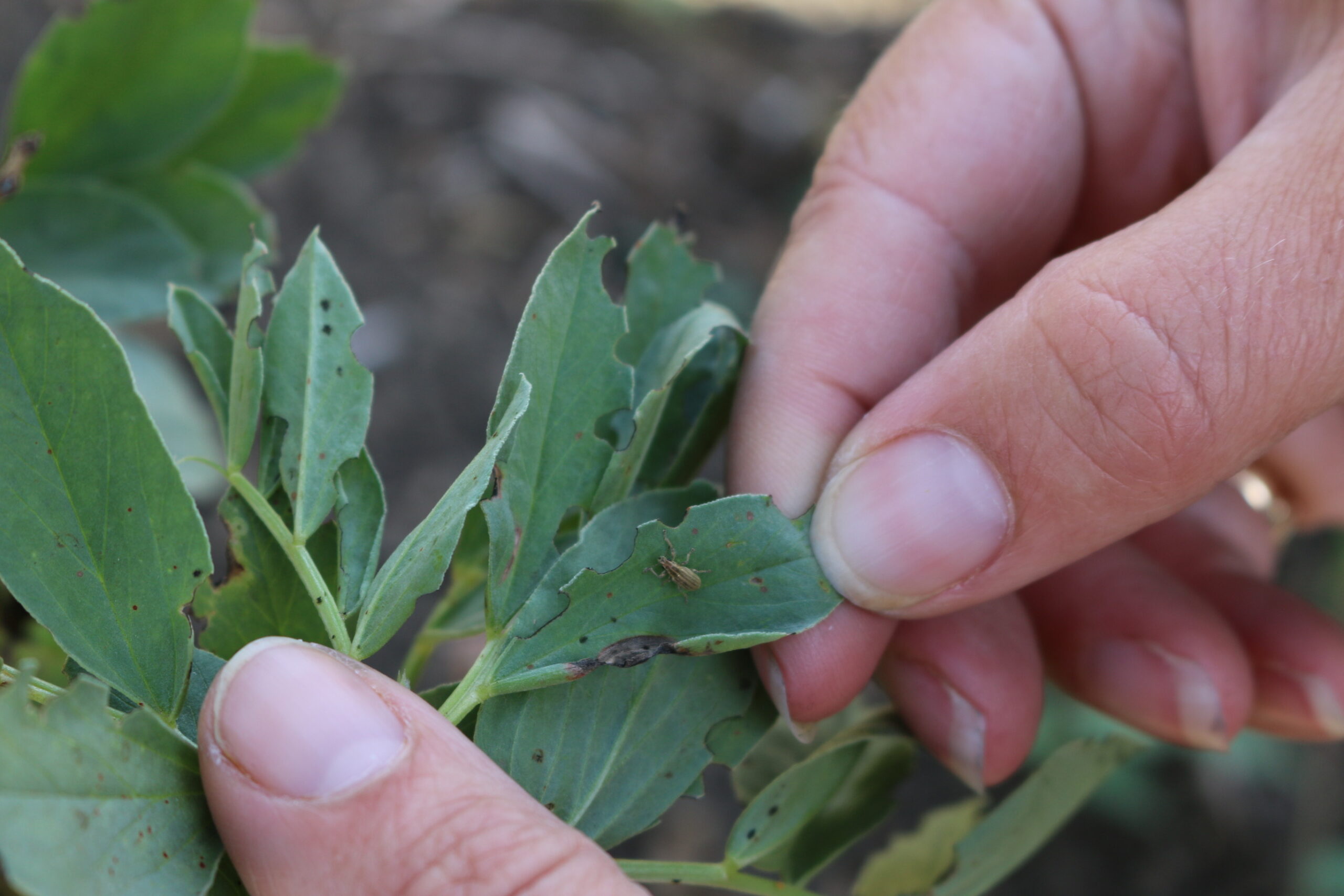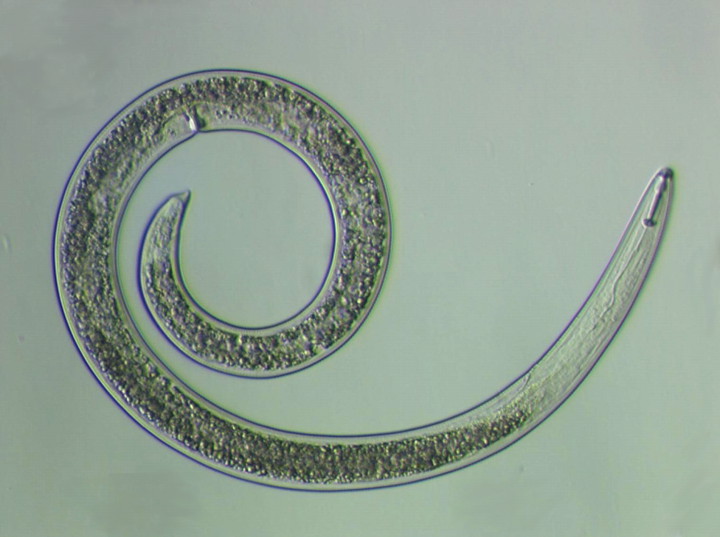If growers have noticed odd looking marks on the lower pea stipules (what most call leaves), then they are not alone. Agronomists are looking closely when scouting pea fields and have noticed symptoms such as those in Figure 1.
The damage is the result of leaf miners that feed between the layers in the leaf. The miners are larvae and by the time the damage is noticed, the culprits are often gone and have left tracks in pea fields. Damage is most often restricted to the bottom stipules of the plants and does not result in yield loss.

Photo courtesy of K. Martfeld, P.Ag., Crop Production Services, Major, SK
Scott Hartley, Provincial Insect Specialist with the Saskatchewan Ministry of Agriculture says “leaf mining can be common but is aesthetic and not economical. It would be very difficult to get control of something living within the leaf.”
Scott Meers, Insect Specialist with Alberta Agriculture and Rural Development has noticed similar symptoms in Alberta. “Every year when we conduct our pea leaf weevil survey (in June), we see a number of leaves with leaf miner damage.”
“In our program in Alberta we have attempted to rear adult flies from these miners but so far have been unsuccessful in doing so,” comments Meers. “Even if we did manage to get adults, their identification is notoriously difficult. The bottom line is that the exact specie(s) responsible is currently unknown. It is almost certainly a fly in the family Agromyzidae. It is possibly a complex of species as well.”
Owen Lonsdale of the National Identification Service with Agriculture and Agri-Food Canada believes the possible culprits could be a bunch of different agromyzids, including either Phytomyza syngenesiae or a few problem Liriomyza. “I am guessing L. brassicae or L. trifolearum, but possibly also L. trifolii or L. sativae,” he says. “Usually they are not much of a problem in Canada because they are hit incredibly hard by a number of Eulophidae.”
The Eulophidae referenced by Lonsdale are a family of parasitoid wasps that can be very effective in keeping leaf miner populations under control, according to Meers. The presence of these natural enemies also offers a different option rather than a chemical solution. “In my estimation the damage is often more cosmetic than economic,” says Meers. ”Usually the leaf miner is only on one or two older leaves on a plant and not all plants are affected. The loss of these older leaves is not likely causing any yield loss as the younger leaves are far more important in providing the plant its nutrients.”
It is good to see agronomists and producers looking closely at their crops and sharing their experience. Leaf miners are an insect issue but experts assure us that it is on the radar but not one to be concerned with for yield loss.


